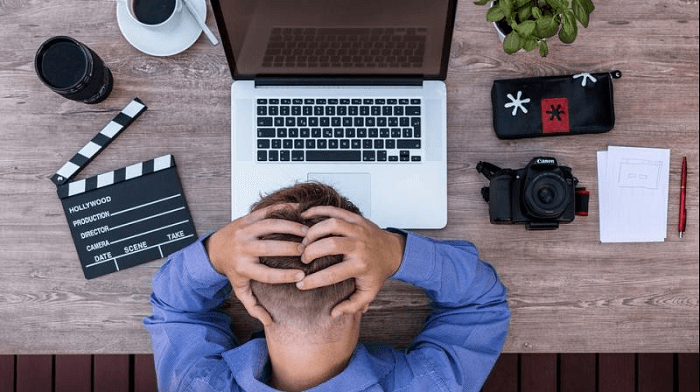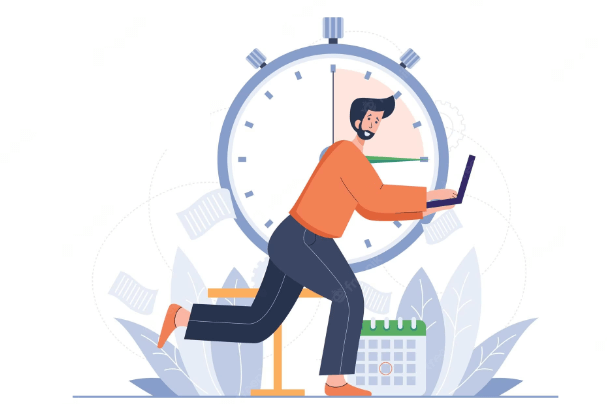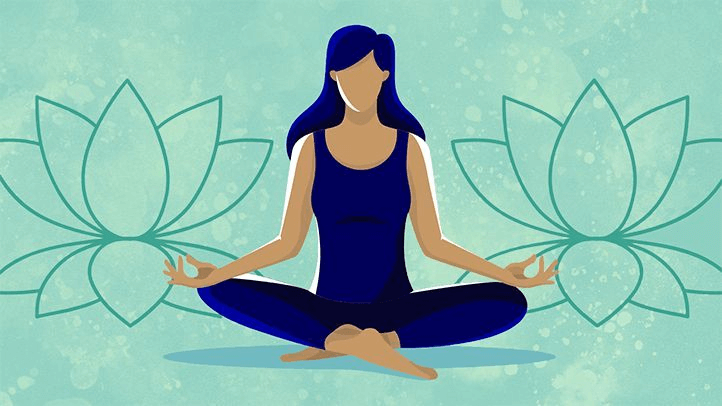Difference Between Stress and PressureIntroductionStress and pressure are commonly used scenarios in our daily lives, but they are often used interchangeably despite having distinct meanings. While both terms can refer to mental or emotional tension, they differ. 
Stress can be defined as the physical and emotional response to a perceived threat or challenge. It is a natural and necessary response that helps us cope with difficult situations. Various factors, such as work, relationships, financial difficulties, health problems, or significant life changes, can cause stress. On the other hand, pressure refers to the demands or expectations placed on an individual to perform or meet specific standards. It can be external, such as deadlines at work, or internal, such as self-imposed expectations. Pressure can come from various sources, such as family, friends, colleagues, or society. While stress and pressure can lead to feelings of anxiety, they differ in their causes and effects. Stress is a response to a perceived threat, while pressure is a response to expectations or demands. Stress can be positive, such as the stress that motivates us to complete a task or meet a challenge, but it can also be damaging if it becomes chronic or overwhelming. On the other hand, pressure can be positive if it helps us achieve our goals, but it can also be damaging if it leads to burnout or anxiety. Understanding the differences between stress and pressure is essential to recognize and manage them effectively. By identifying the source of our stress or anxiety, we can address it and prevent it from becoming overwhelming. We can also develop coping strategies, such as relaxation techniques, exercise, or seeking support from others, to manage the effects of stress and pressure. This article will explore the differences between stress and pressure, their causes and effects, and strategies for managing them. By understanding these concepts, we can learn to recognize and address stress and anxiety in our daily lives, leading to greater well-being and overall success. Understanding Stress: Definition and Causes
Stress is a natural and necessary response to a perceived threat or challenge. It is a physiological and psychological reaction that helps us cope with difficult situations. Stress is not always negative; it can be positive, such as the stress that motivates us to complete a task or meet a challenge. Various factors, including work-related issues, financial difficulties, health problems, family or relationship issues, and significant life changes, cause stress. When we experience stress, our body releases stress hormones, such as adrenaline and cortisol, which trigger the "fight or flight" response. This response prepares our body to confront or run away from the threat. While acute stress is everyday, chronic stress can negatively affect physical and mental health. Prolonged stress can lead to high blood pressure, heart disease, depression, anxiety, and other health issues. Therefore, it is essential to recognize the signs of stress and take steps to manage it effectively. Some common symptoms of stress include irritability, fatigue, headaches, muscle tension, digestive problems, difficulty sleeping, and changes in appetite. If left unaddressed, stress can lead to burnout and other negative consequences. There are various strategies for managing stress, such as exercise, meditation, deep breathing, and other relaxation techniques. Additionally, maintaining a healthy lifestyle, getting enough sleep, and seeking support from friends or professionals can help alleviate stress. Stress is a natural response to a perceived threat or challenge, whether positive or negative. While acute stress is every day, chronic stress can negatively affect our health and well-being. By recognizing the causes and symptoms of stress and implementing effective management strategies, we can lead a more balanced and healthy life. Understanding Pressure: Definition and Causes
Pressure refers to the external or internal demands or expectations placed on an individual to perform or meet specific standards. It can be positive or negative, depending on how it is perceived and managed. Pressure can come from various sources, such as family, friends, colleagues, or society. External pressures include work-related demands, deadlines, or social expectations, while internal forces have personal goals, aspirations, or self-imposed standards. The pressure level can vary from person to person and can depend on individual factors such as personality, beliefs, and experiences. While pressure can motivate individuals to achieve their goals and perform at their best, it can also have adverse effects if it becomes overwhelming or unrealistic. Excessive stress can lead to burnout, anxiety, and other health issues. One common cause of pressure is social comparison. When individuals compare themselves to others and feel like they are falling behind, they may experience pressure to perform at a higher level. Additionally, unrealistic expectations or perfectionism can also lead to feelings of stress and anxiety. Effective pressure management requires identifying the pressure's source and developing strategies to manage it. Some standard techniques for managing stress include setting realistic goals, prioritizing tasks, seeking support from others, and practicing self-care. Pressure refers to the external or internal demands or expectations placed on an individual to perform or meet specific standards. While anxiety can be positive or negative, excessive pressure can negatively affect an individual's mental and physical health. By understanding the causes and effects of stress and implementing effective management strategies, individuals can better navigate the demands of their personal and professional lives. The Key Differences between Stress and PressureStress and pressure are often used interchangeably but have distinct causes and effects. Understanding the differences between stress and anxiety is crucial for managing them effectively. Stress is a physiological and psychological response to a perceived threat or challenge. At the same time, pressure refers to the external or internal demands or expectations placed on an individual to perform or meet specific standards. Stress is a natural and necessary response that helps us cope with difficult situations. At the same time, pressure can come from various sources, such as family, friends, colleagues, or society. While stress can be positive or negative, pressure can be positive if it motivates us to achieve our goals or negative if it becomes overwhelming or unrealistic. Stress is a response to a perceived threat, while pressure is a response to expectations or demands. The effects of stress and pressure also differ. While stress can lead to anxiety, burnout, and other health issues, it can also motivate and help us achieve our goals. On the other hand, pressure can lead to stress, burnout, and other negative consequences if it becomes too intense or unrealistic. Managing stress and pressure requires different strategies. Individuals may use exercise, meditation, and other relaxation techniques to manage stress. Working pressure may require setting realistic goals, prioritizing tasks, seeking support from others, and practising self-care. Stress and pressure are distinct concepts with different causes and effects. While stress is a natural and necessary response that can be positive or negative, pressure can be positive or negative depending on how it is perceived and managed. Understanding the differences between stress and pressure and implementing effective management strategies can lead to greater well-being and overall success. Physical and Psychological Effects of Stress and Pressure
Stress and pressure can have significant physical and psychological effects on individuals. While stress and pressure are distinct concepts, they can negatively affect an individual's mental and physical health. Stress can lead to various physical symptoms, such as headaches, muscle tension, chest pain, and high blood pressure. Chronic stress can lead to long-term health problems like heart disease, stroke, and obesity. Additionally, stress can affect an individual's immune system, making them more susceptible to illnesses. Psychologically, stress can lead to anxiety, depression, and other mental health issues. Prolonged stress can also lead to burnout, a state of emotional, physical, and mental exhaustion caused by excessive and prolonged stress. Burnout can result in feelings of detachment, cynicism, and reduced effectiveness in personal and professional activities. Pressure can also have adverse physical and psychological effects. High-pressure levels can lead to anxiety, sleep disorders, and reduced immune function. Additionally, pressure can lead to burnout and decreased job satisfaction. Psychologically, pressure can cause an individual to experience feelings of inadequacy or failure if they cannot meet expectations. Negative self-talk and self-criticism can also contribute to feelings of pressure and anxiety. Effective management of stress and pressure requires a comprehensive approach that addresses physical and psychological symptoms. Techniques such as exercise, meditation, and other relaxation techniques can help reduce the physical symptoms of stress and pressure. Seeking support from friends, family, or professionals can help individuals manage the psychological effects of stress and pressure. Stress and pressure can have significant physical and psychological effects on individuals. Managing stress and pressure requires a comprehensive approach addressing physical and psychological symptoms. By implementing effective management strategies, individuals can reduce the negative effects of stress and pressure and lead a more balanced and healthy life. Coping Strategies for Managing Stress and Pressure
Effective management of stress and pressure requires a range of coping strategies that address Physical and psychological symptoms. Here are some techniques that can help individuals manage stress and pressure:
Managing stress and pressure requires various coping strategies that address physical and psychological symptoms. By implementing techniques such as exercise, meditation, time management, self-care, seeking support, setting realistic goals, mindful breathing, and CBT, individuals can effectively manage stress and pressure and lead a more balanced and healthy life. Conclusion: Recognizing and Addressing Stress and Pressure in Your LifeStress and pressure are a part of life, and while they can be positive motivators, they can also have negative consequences on an individual's physical and mental health. It is essential to recognize the signs and symptoms of stress and pressure and take action to manage them effectively. One of the critical steps in managing stress and pressure is recognizing the difference between them. Stress is a response to a perceived threat or challenge, while pressure is the external or internal demands or expectations placed on an individual to perform or meet specific standards. By understanding the differences, individuals can implement appropriate coping strategies that address stress and pressure's particular causes and effects. Effective management of stress and pressure requires a range of coping strategies that address physical and psychological symptoms. Techniques such as exercise, meditation, time management, self-care, seeking support, setting realistic goals, mindful breathing, and cognitive-behavioural therapy (CBT) can help individuals reduce stress and pressure's negative effects and lead to a more balanced and healthy life. It is also essential to recognize that stress and pressure can come from various sources, including personal and professional relationships, financial concerns, and societal expectations. Addressing the root causes of stress and pressure may require changes in lifestyle, relationships, and work habits. Seeking professional help, such as therapy or counselling, can also be valuable in managing stress and pressure. In addition, practising self-compassion and self-care is crucial in managing stress and pressure. Taking time to engage in activities that bring pleasure and relaxation, setting healthy boundaries, and prioritizing self-care can help individuals feel more in control and better manage stress and pressure. Recognizing and addressing stress and pressure is crucial for maintaining physical and mental health and overall well-being. By understanding the differences between stress and pressure, implementing effective coping strategies, addressing the root causes, and practising self-compassion and self-care, individuals can effectively manage stress and pressure and lead a more balanced and fulfilling life. Difference between Stress and Pressure
Next TopicDifference Between
|
 For Videos Join Our Youtube Channel: Join Now
For Videos Join Our Youtube Channel: Join Now
Feedback
- Send your Feedback to [email protected]
Help Others, Please Share










